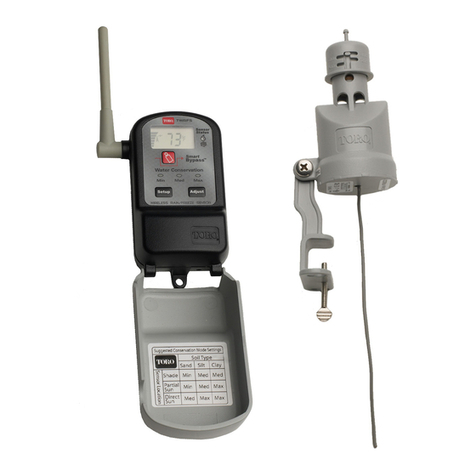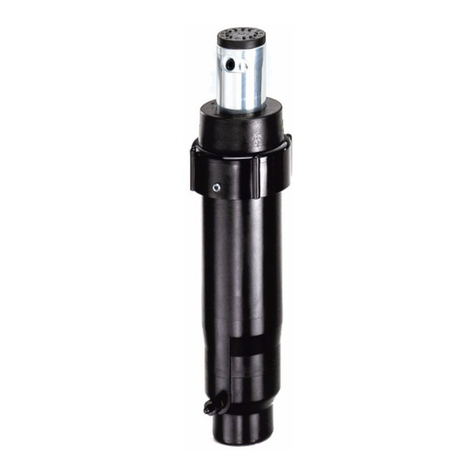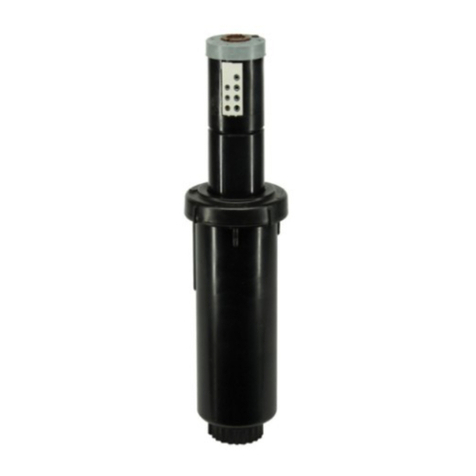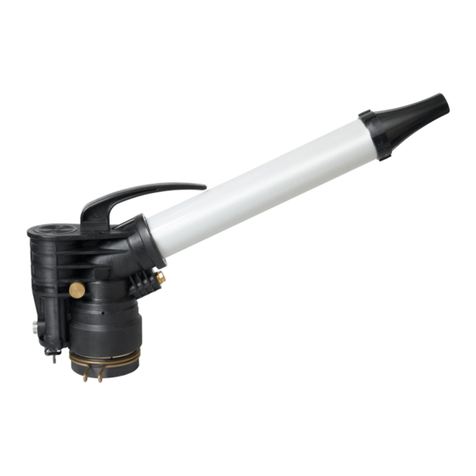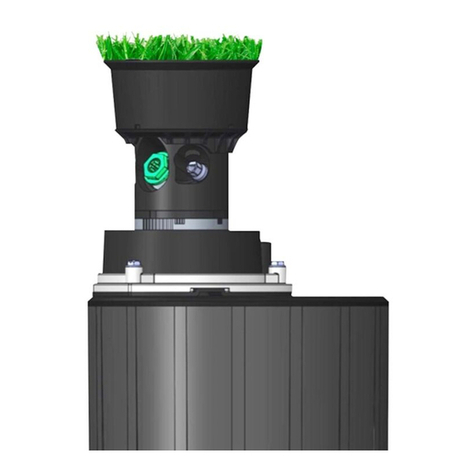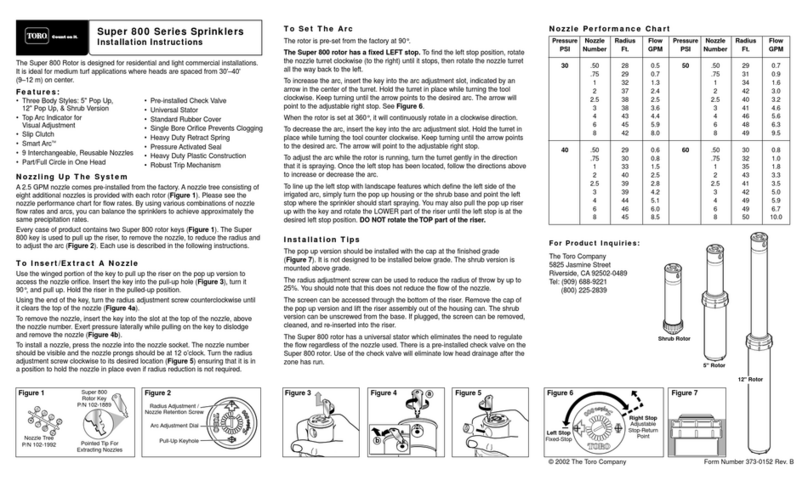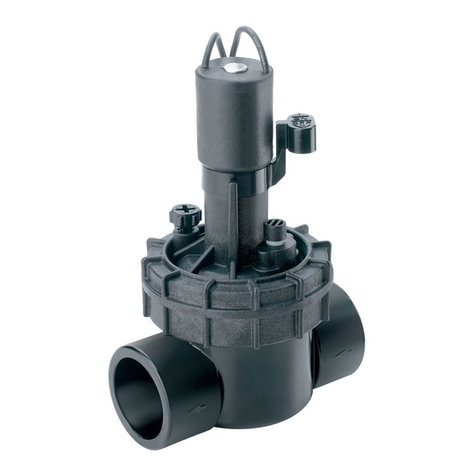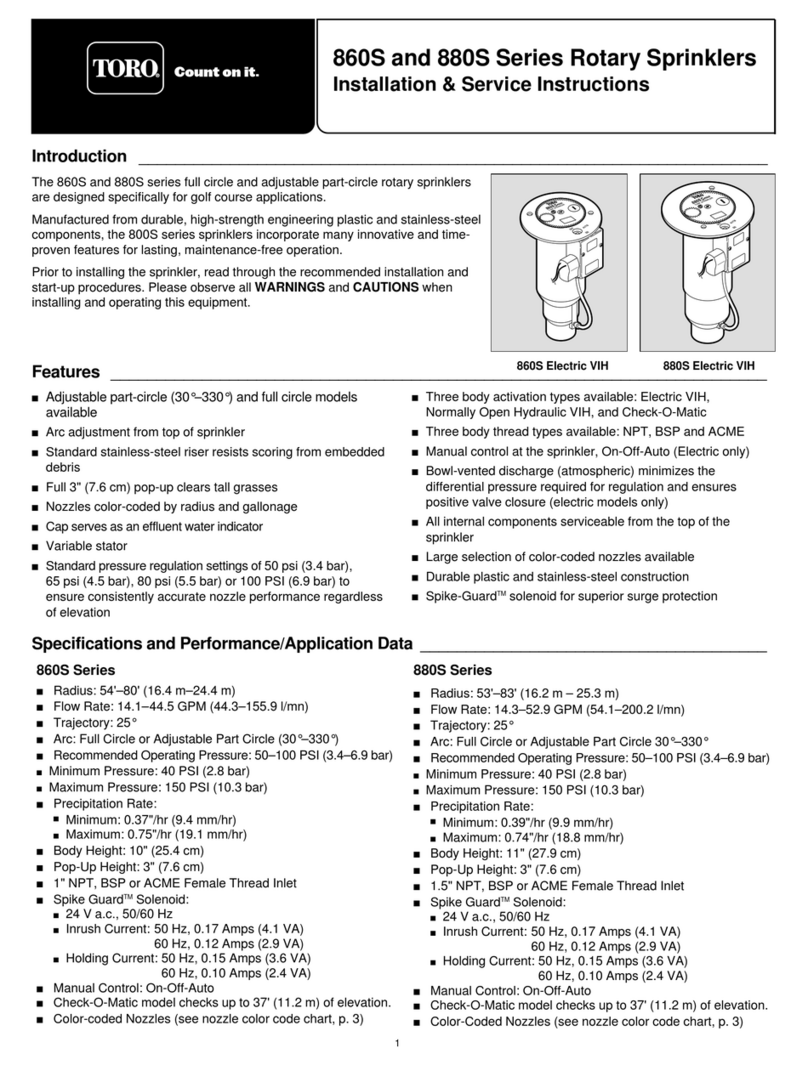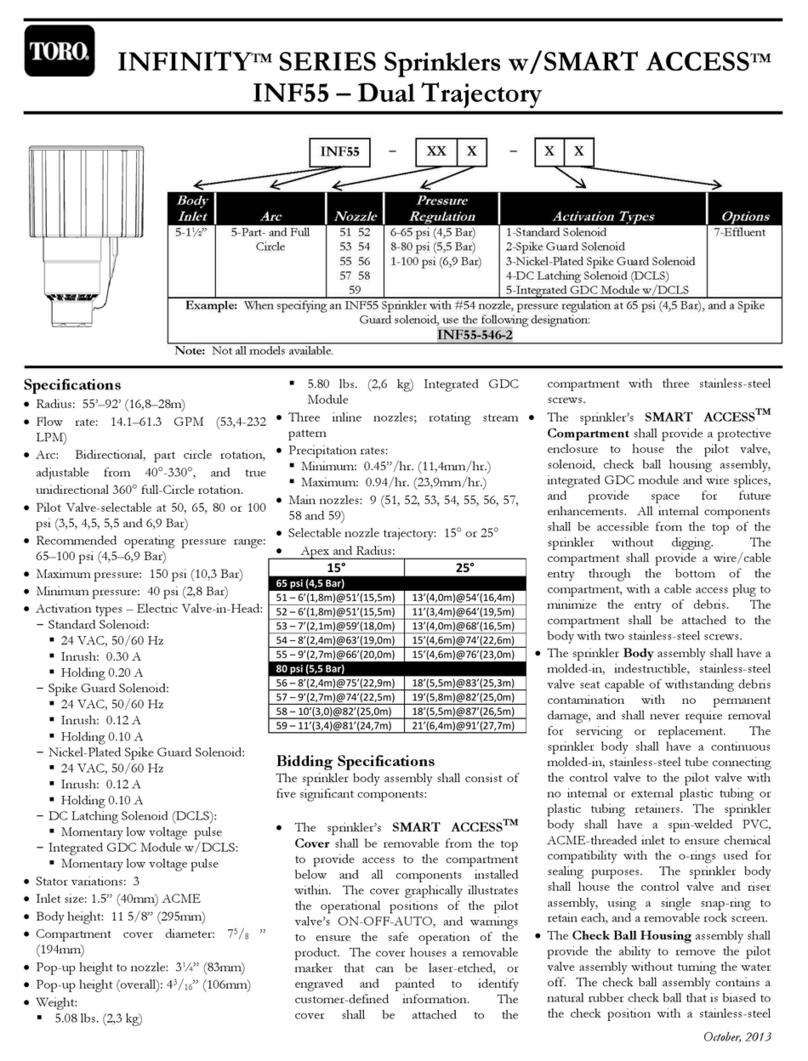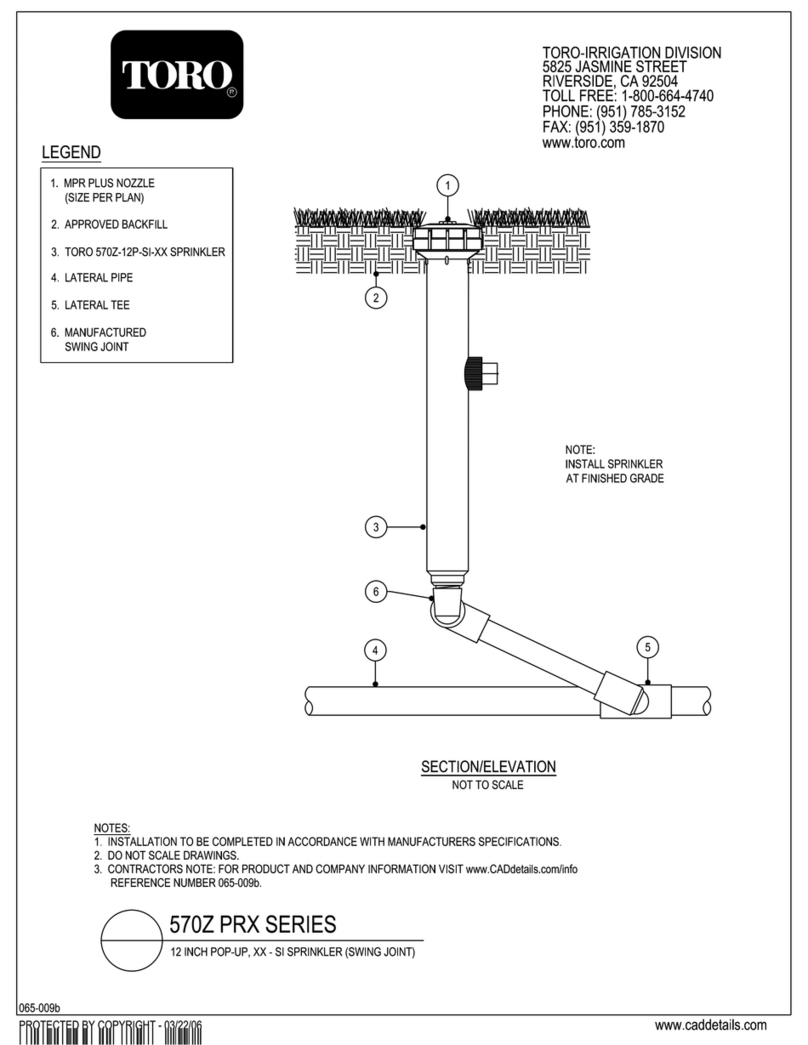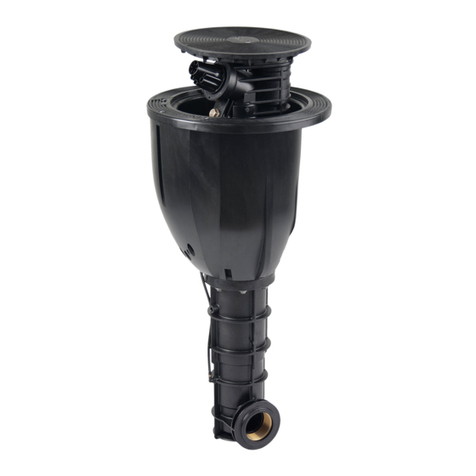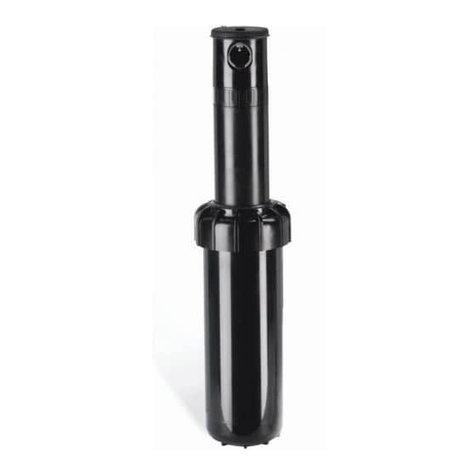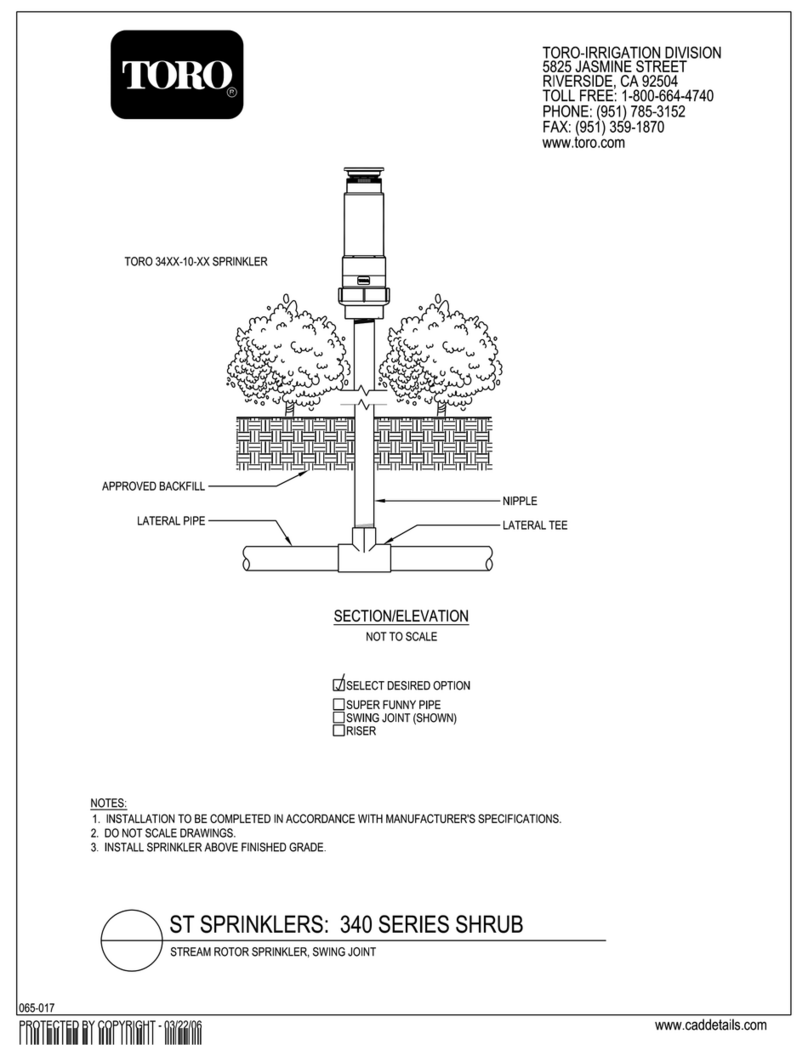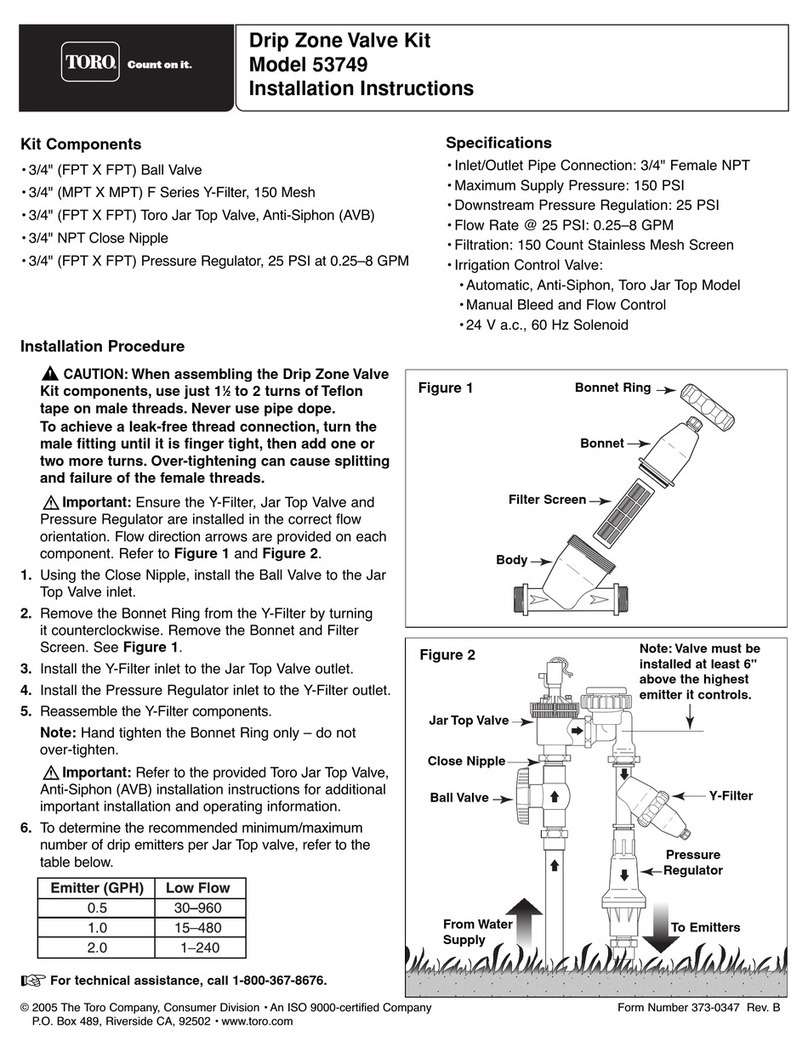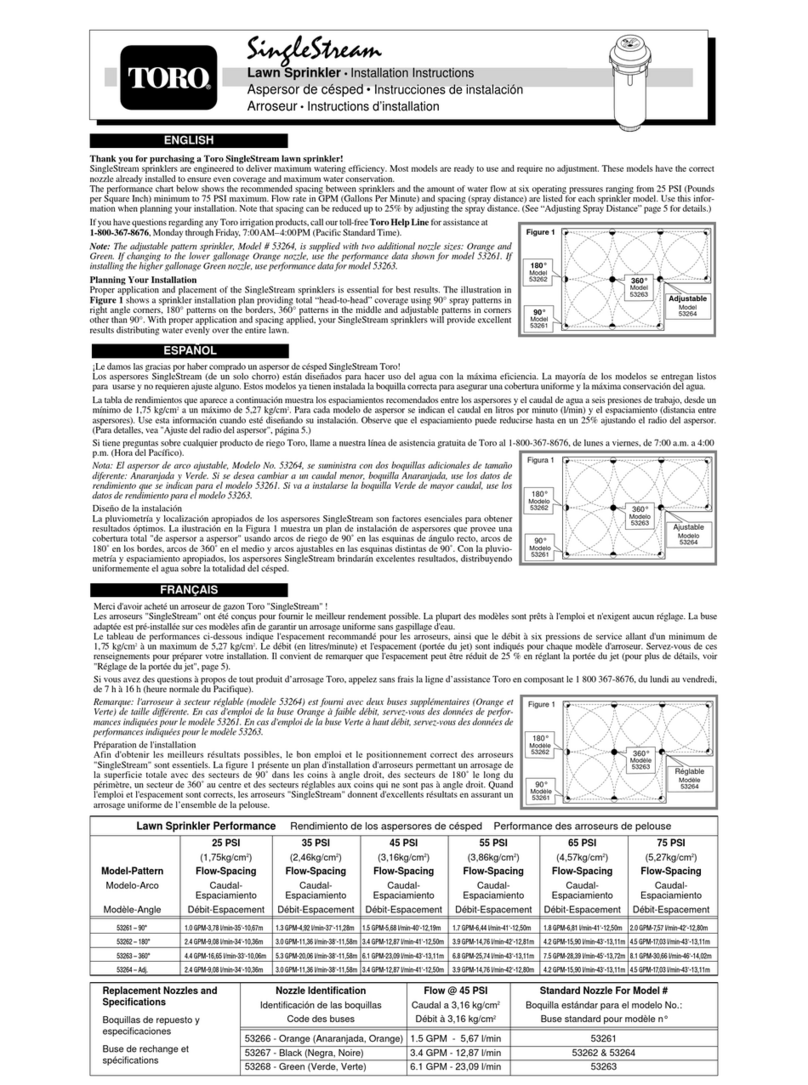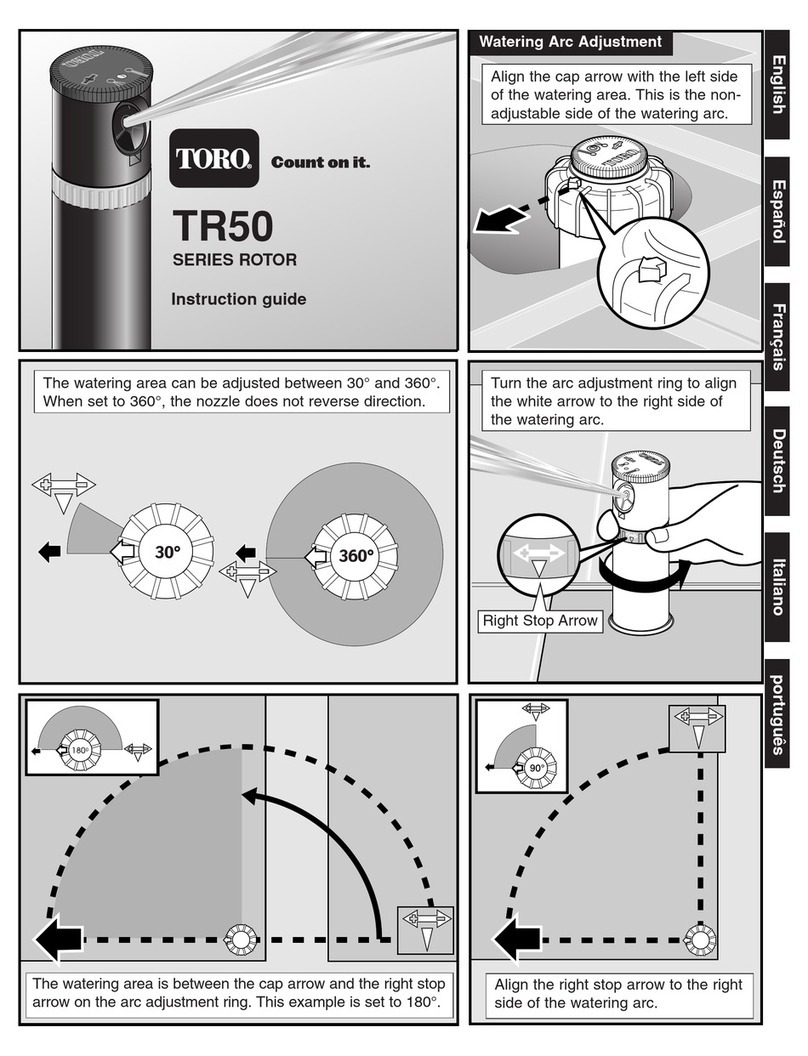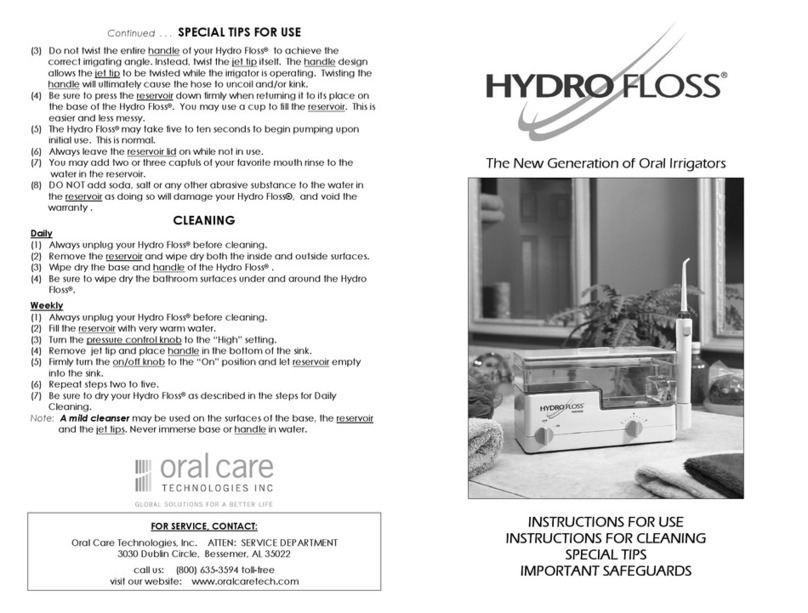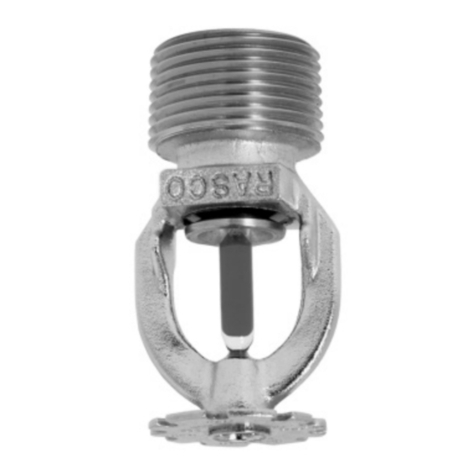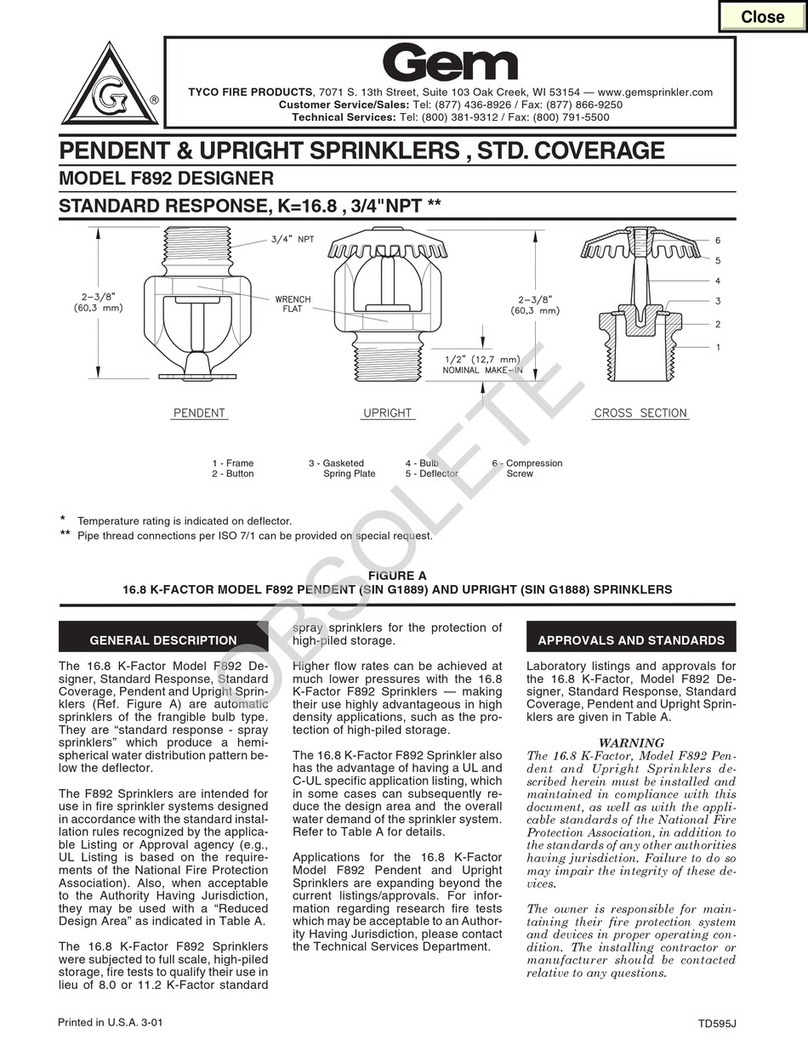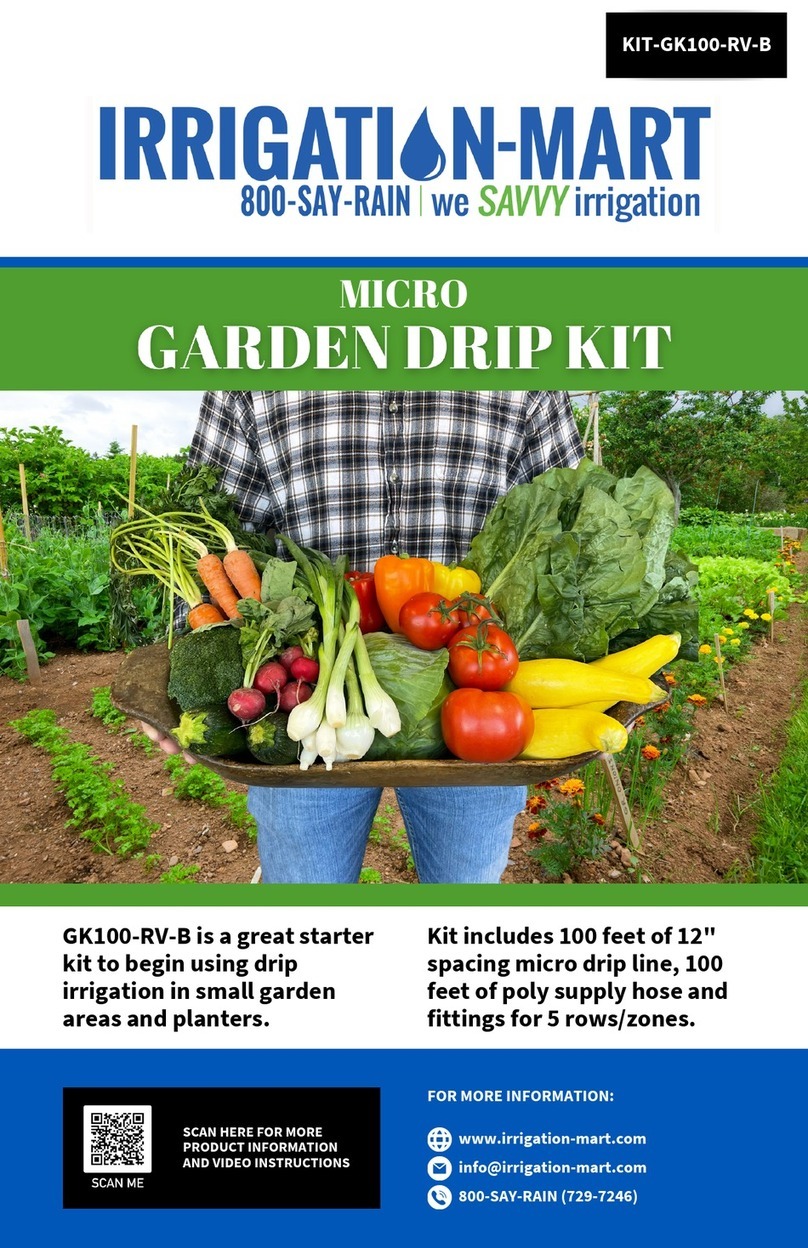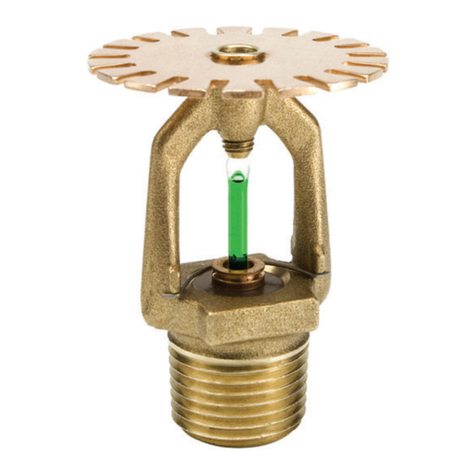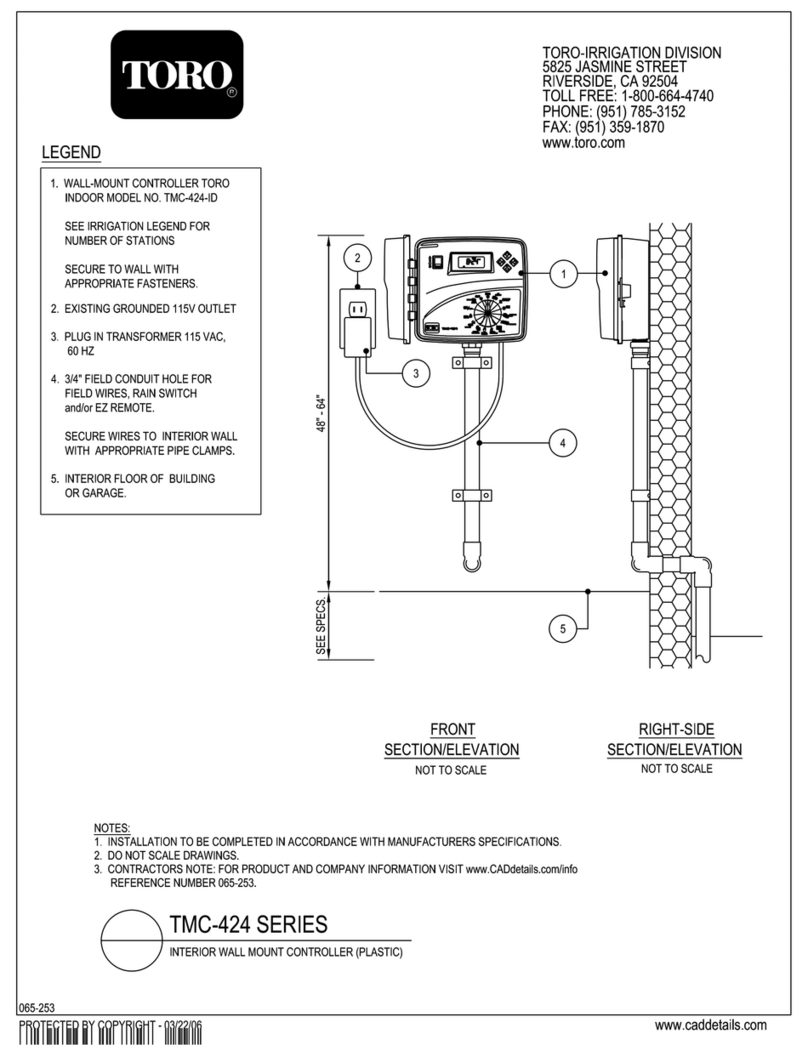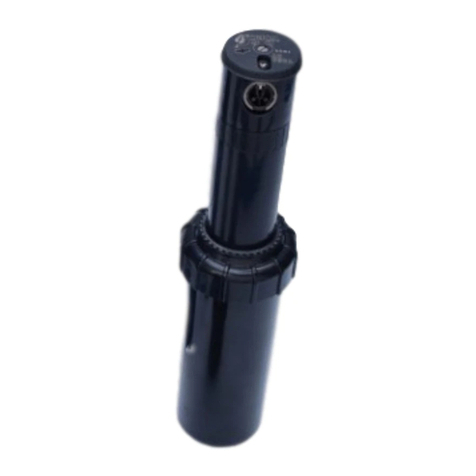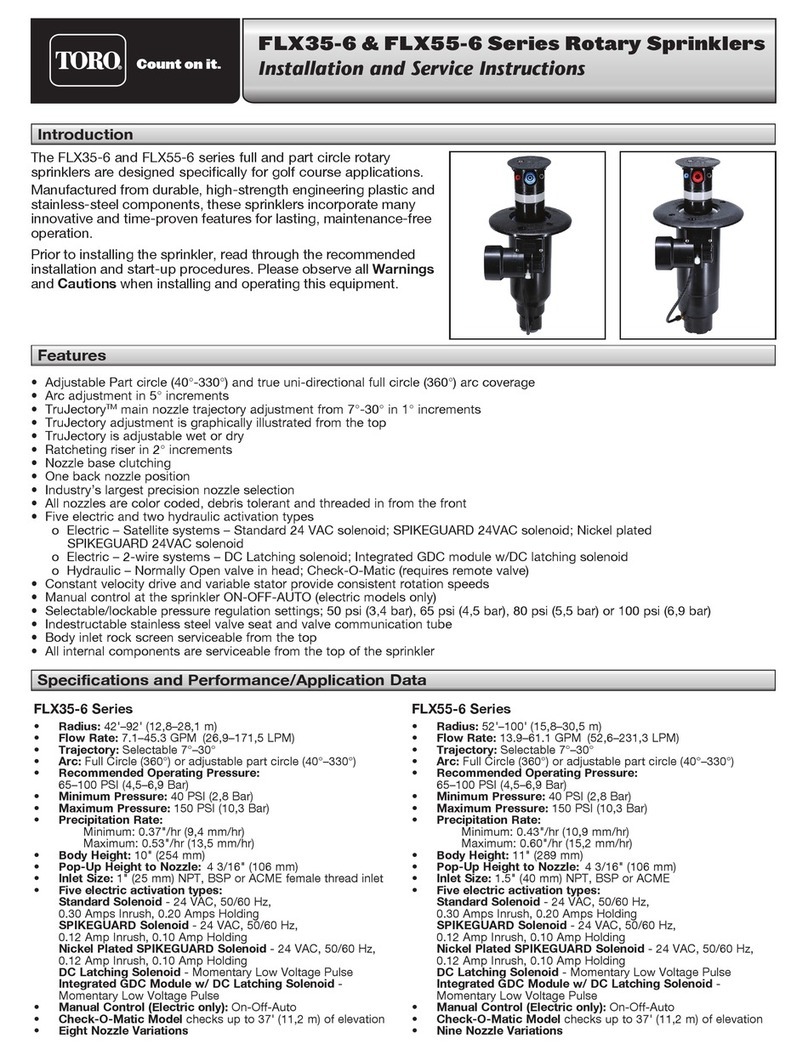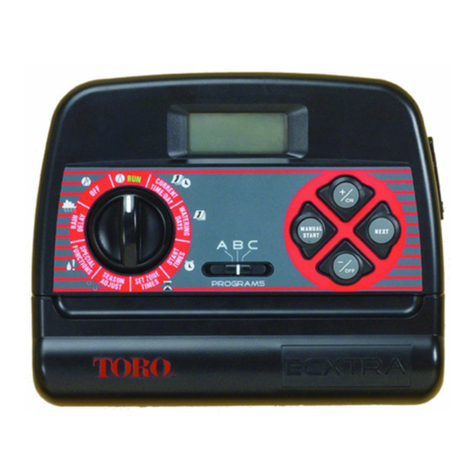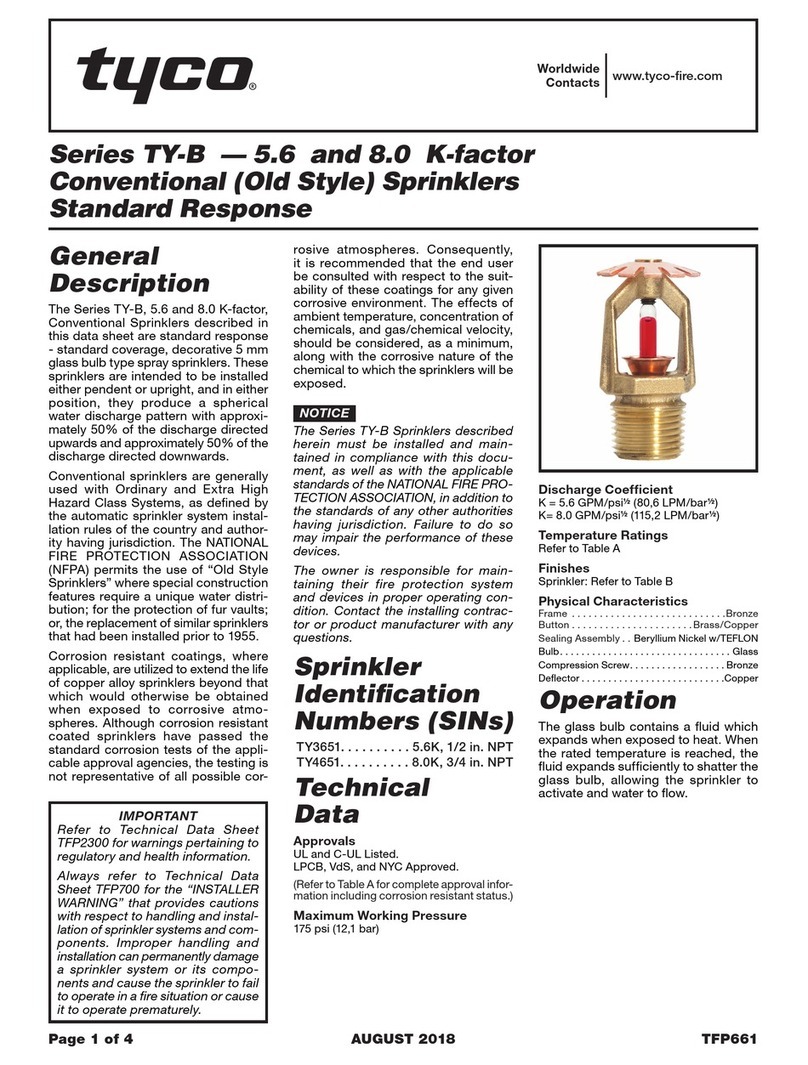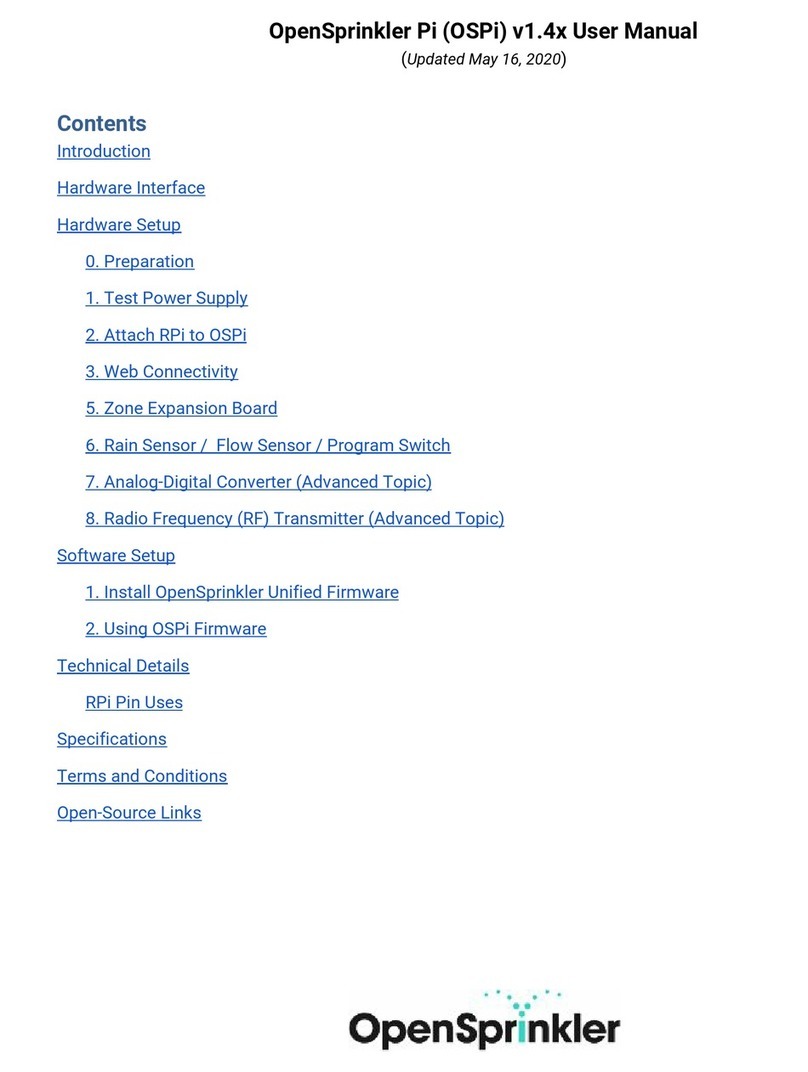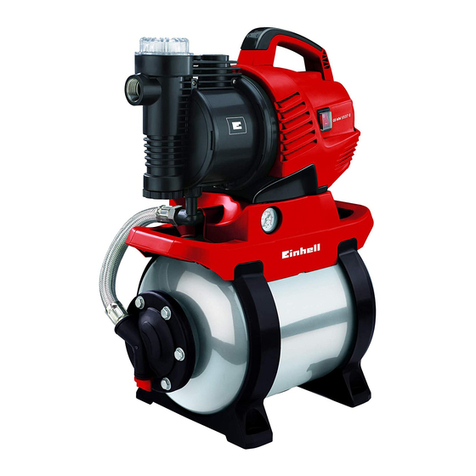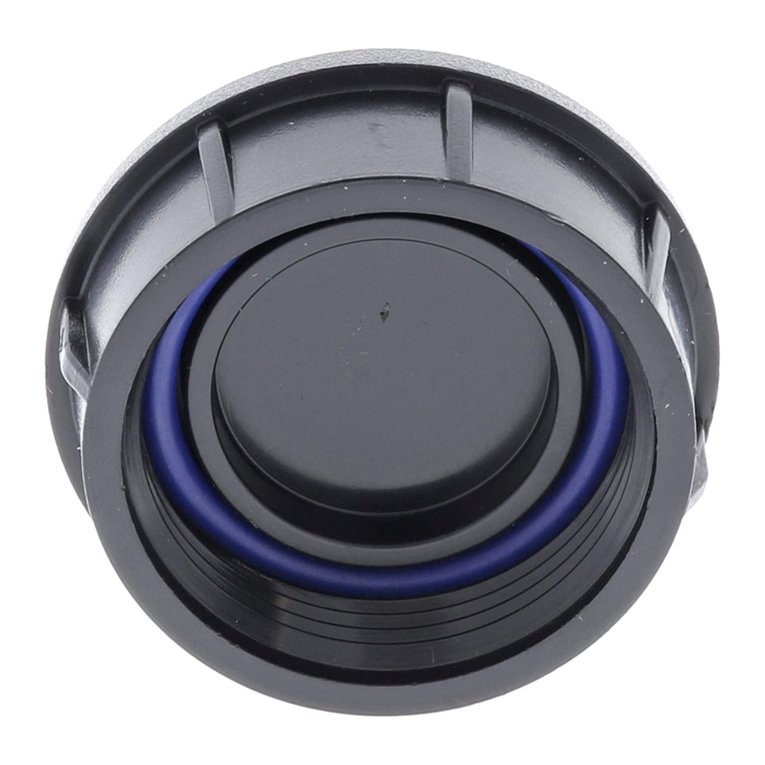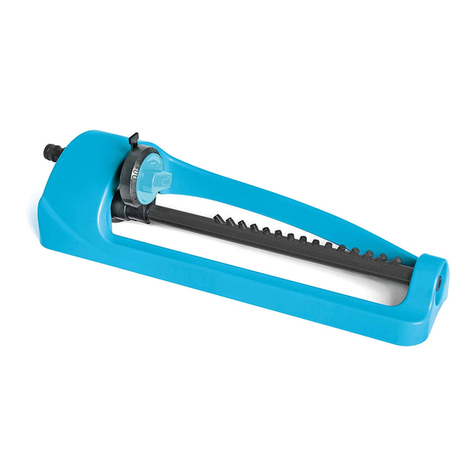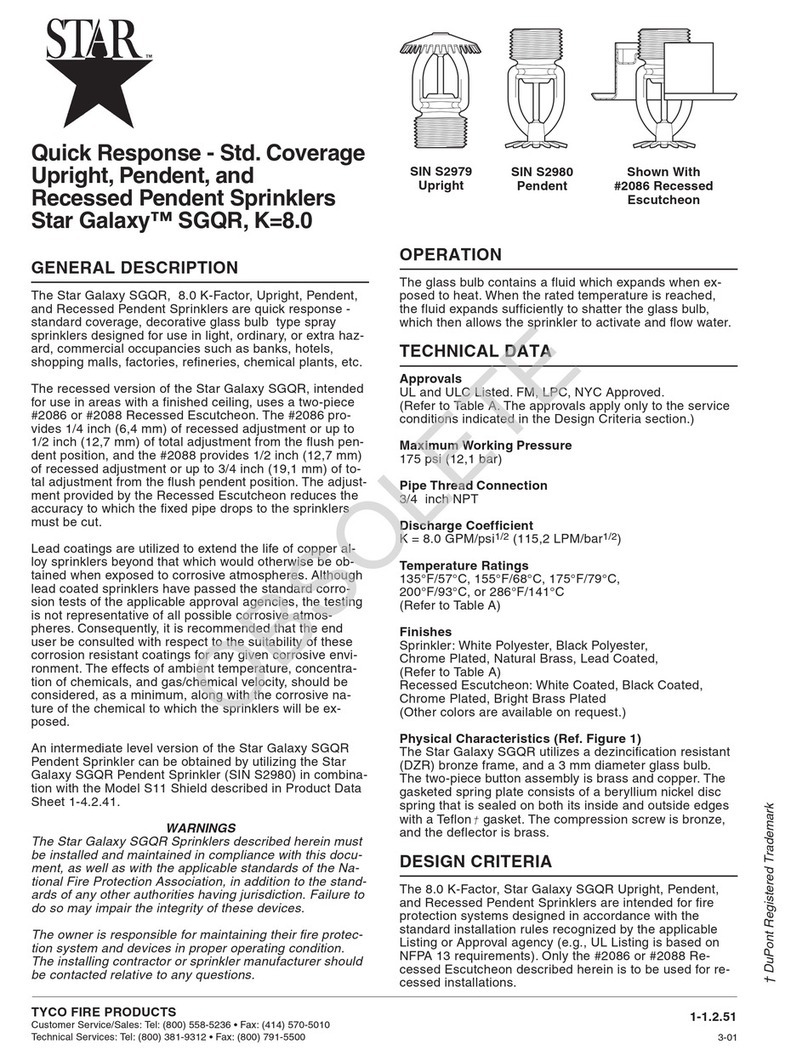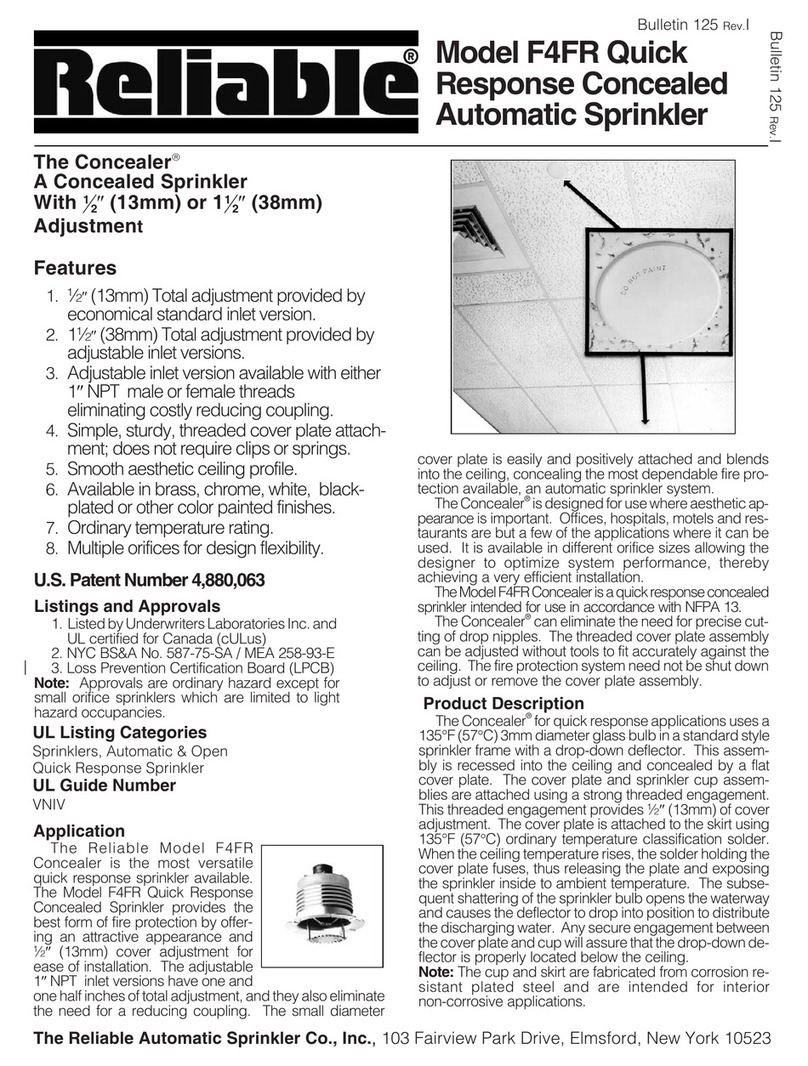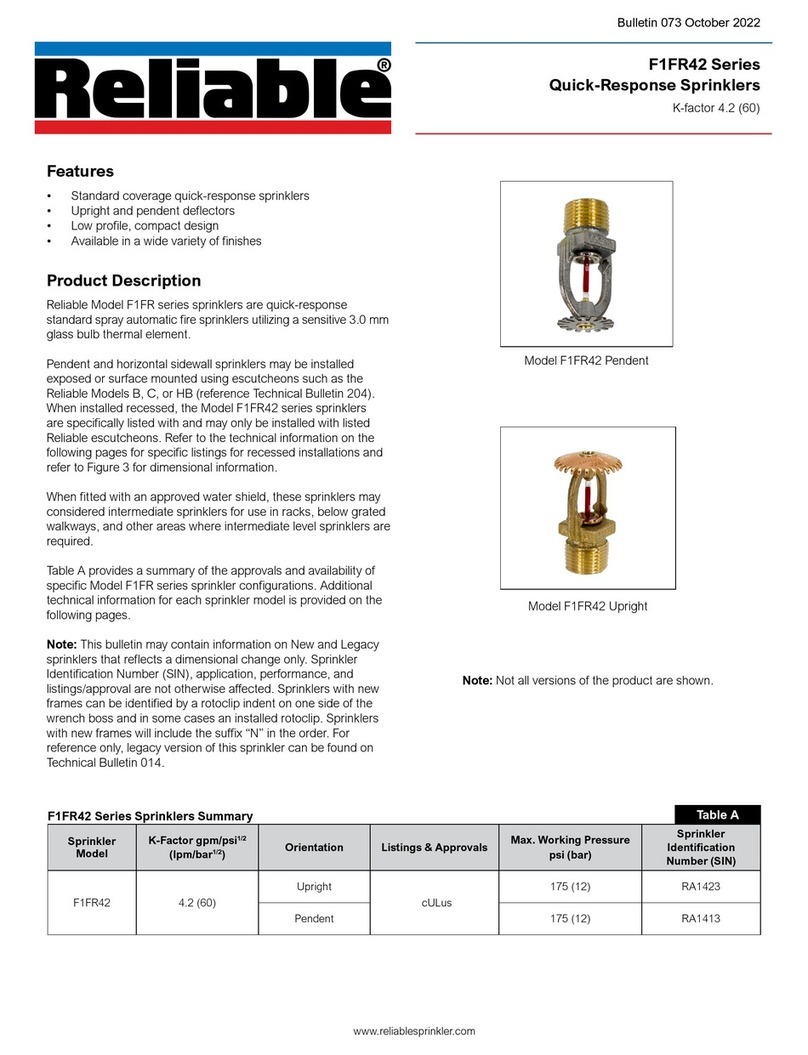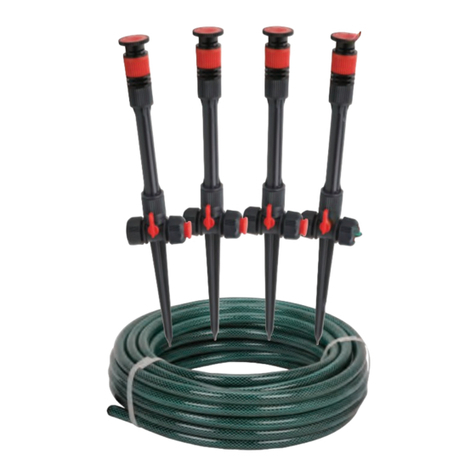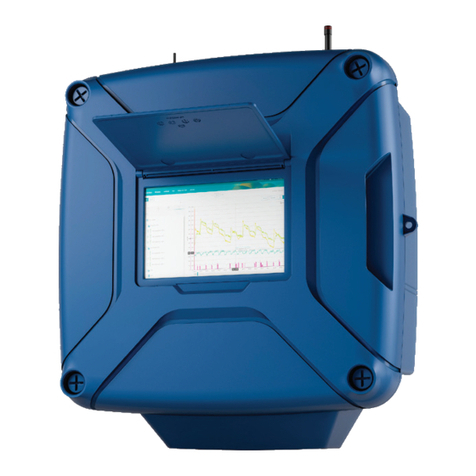Introduction ____________________________________________________________________
The DT35 and DT55 series full-circle/adjustable part-circle rotary sprinklers are
designed specifically for golf course applications.
Manufactured from durable, high-strength engineering plastic and stainless-steel
components, these sprinklers incorporate many innovative and time-proven
features for lasting, maintenance-free operation.
Prior to installing the sprinkler, read through the recommended installation and
start-up procedures. Please observe all WARNINGS and CAUTIONS when
installing and operating this equipment.
Features ________________________________________________________________________
DT35 and DT55 Series Rotary Sprinklers
Installation & Service Instructions
DT35 Electric VIH DT55 Electric VIH
■Full-circle (360°) with uni-directional clockwise rotation and
adjustable part-circle (40°–330°) configuration
■Arc adjustment from riser band in 5° increments
■Trajectory main nozzle - Selectable 15° or 25°
■Full 4" (10.2 cm ) pop-up clears tall grasses
■Color-coded nozzles by radius and gallonage
■Cap serves as an effluent water indicator
■Variable stator ensures 3-minute rotation
■Selectable pressure regulation settings of 50 psi (3.4 bar),
65 psi, 80 psi or 100 psi to ensure consistently accurate
nozzle performance regardless of elevation (Electric only)
■Three valve activation types available: Electric Valve-In-Head,
Normally Open Hydraulic Valve-In-Head, and Check-O-Matic
DT35 Series
■Radius: 43'–88' (13,1 m–26,8 m) @ 25° trajectory
■Flow Rate: 15–50 GPM (56,8–189,3 LPM)
■Trajectory: Selectable 15° or 25°
■Arc: full circle (360°) or adjustable part circle (40°–330°)
■Recommended operating pressure: 65–100 psi (4,5–6,9 bar)
■Minimum pressure: 40 psi (2,8 bar)
■Maximum pressure: 150 psi (10,3 bar)
■Precipitation rate:
■Minimum: 0.46"/hr (1,17 cm/hr)
■Maximum: 0.63"/hr (1,60 cm/hr)
■Inlet Size: 1" (25 mm) NPT, BSP or ACME
■Electric Valve-in-head Solenoid:
■Inrush current: 0.30A @ 24 VAC, 50/60 Hz
■Holding current: 0.20A @ 24 VAC, 50/60 Hz
■Check-O-Matic model checks up to 37' (11,27 m) of elevation
■Three valve activation types available: Electric Valve-In-Head,
Normally Open Hydraulic Valve-In-Head, and Check-O-Matic
■Three body thread types available: NPT, BSP and ACME
■Manual sprinkler operation control: On-Off-Auto (Electric only)
■All internal components serviceable from the top of the
sprinkler
■Large selection of color-coded nozzles available
■Durable plastic and stainless-steel construction
■Constant velocity drive
■Optional back nozzles available
■Color-coordinated nozzles
■Optional radius reduction screw
DT55 Series
■Radius: 52'–95' (15,8–28,9 m) @ 25° trajectory
■Flow rate: 15–62 GPM (56,8–234,7 LPM)
■Trajectory: Selectable 15° or 25°
■Arc: full circle (360°) or adjustable part circle (40°–330°)
■Recommended operating pressure: 65–100 psi (4,5–6,9 bar)
■Minimum pressure: 40 psi (2,8 bar)
■Maximum pressure: 150 psi (10,3 bar)
■Precipitation rate:
■Minimum: 0.50"/hr (1,27 cm/hr)
■Maximum: 0.72"/hr (1,83 cm/hr)
■Inlet Size: 1.5" (38 mm) NPT, BSP or ACME
■Electric Valve-in-head Solenoid:
■Inrush current: 0.30A @ 24 VAC, 50/60 Hz
■Holding current: 0.20A @ 24 VAC, 50/60 Hz
■Check-O-Matic model checks up to 37' (11,27 m) of elevation
Note: For preliminary use only.
Specifications and Performance/Application Data ________________________________________
